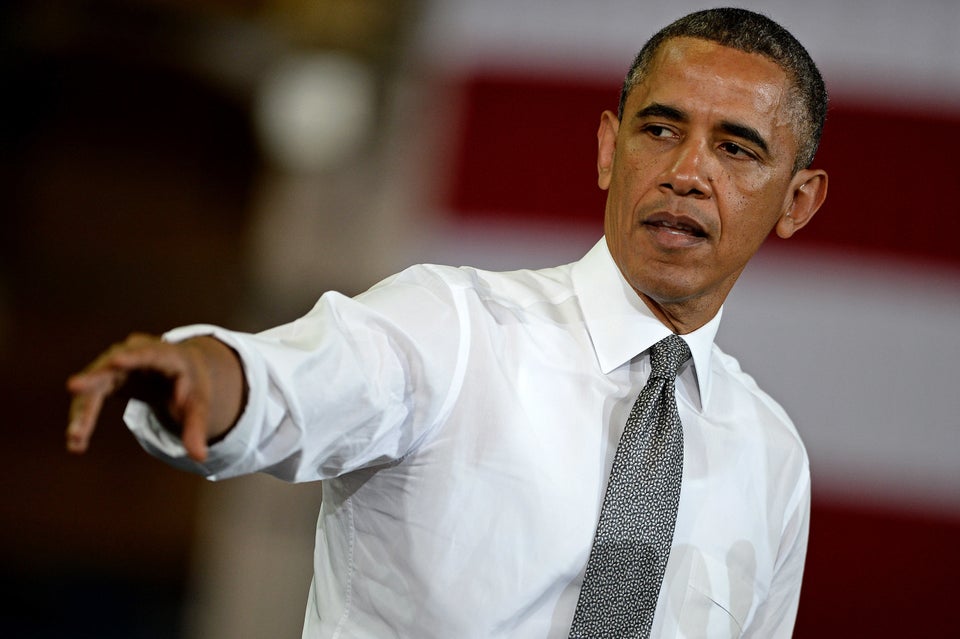WASHINGTON –- Barack Obama was so focused and organized in Ohio for his reelection last year that he had 1,000 neighborhood teams in place in the state a year before Election Day.
His Ohio message was clear and sharp: the country was facing an historic “make or break moment for the middle class,” and his work on health care and the auto-industry rescue were evidence of his enduring commitment.
The Ohio field workers and message were driven by an innovative and unrivaled machine of political organization and persuasion. The best and brightest of Geekdom flocked to Chicago to use the latest in Big Data analytics, social media and on-line feedback research to put Ohio, and other key battleground states, in the president’s column.
This famously aloof president assembled an unrivaled system of person-to-person, face-to-face and email-to-email contact – a writ-large 21st century version of the 20th century Chicago ward politics, only without the patronage.
These and other details from a new book by author and historian Jonathan Alter beg crucial questions at this new pivotal moment in the Obama saga:
- What happened to the focus, drive and the “message discipline"?
- What happened to those geeks, so brilliant at political persuasion?
- How could a leader who assembled two superb, well-run presidential campaigns seem at times so tuned out to operational details of his administration?
- In other words, where’s the Ohio Obama?
In The Center Holds: Obama and His Enemies, Alter set out, among other things, to show the how and the why of Obama’s convincing victory over former Massachusetts Gov. Mitt Romney.
“Everyone has known since the election that Obama did better on digital tech,” Alter told me. “I wanted to show how he did better –- and in plain English, translated from the original geek.”
For anyone interested in politics –- or tech for that matter -– the result is a fascinating look at the new mechanics of politics in the age of the Internet, social media and Big Data.
You can read about the creativity of the Chicago Geeks and their urgency and dedication: the secret boiler room of algorithm writers, the mix of throw-it-against-the-wall imagination and hard-data research, the seven-day-a-week, dawn-to-midnight hours, the (mostly) clear lines of authority and (comparative) lack of leaks and backstabbing.
And then you can wonder: where is all of that now?
Well, there is, for one, the unavoidable physics of second terms. It afflicts every two-term administration. Early pioneers depart for private life and/or profit. “I was struck by how almost none of the stars of the campaign went into –- or back into –- the government,” Alter said. One exception is David Simas, a shrewd survey researcher.
The new wave of geeks and managers isn’t interested, either, and that is because of their view of government itself.
“Generally speaking, talented people from the campaign want to have nothing to do with the government,” Alter said.
Obama has done some things to geek up government. His administration has upgraded some digital capacity –- some of which is being applied to Obamacare, Alter said. “But the government hasn’t changed as much as they had all hoped. They have social media down, but the big analytical advances don’t seem to have been incorporated," he said.
The sad fact is that government today –- as opposed to campaigns -– is usually behind the curve of technical innovation, something that wasn’t always the case in U.S. history, by the way.
“It’s not fair to expect the government to be ahead of the private sector,” said Alter. “In that sense, the campaign was even more innovative than people have recognized. It may take a few years for these techniques to work their way into the private sector and then into government.”
In the meantime, what does Obama say? The election was supposed to be a “make or break moment for the middle class,” and Alter believes that it was –- if only because Obama was able to fend off a victory by a Romney-led right wing.
But the president’s message has been notably muted and muddled in what should be a vigorous first six months of a new term. He mentions the middle class fitfully, almost as if a to-do widget on his iPad is telling him to.
In other parts of his book Alter portrays a first term White House full of barely contained divisions and resentments that sometimes hamper Obama’s ability to get things done –- a vivid contrast to the Chicago campaign.
With key aides gone, who is in charge now? If Alter’s account is correct, the key and indispensable remaining inside player is long-time Obama Chicago friend and loyalist Valerie Jarrett.
Now the president faces another inevitable piece of second-term physics: a season of accusation. In Obama’s case, it’s about IRS vetting of conservative groups and Department of Justice subpoenas of news organizations and reporters.
Can the president soldier through it, make his case and get important things done in a second term –- say, immigration reform, a budget deal and a solid implementation of Obamacare?
He will need to show the discipline and focus of 2012. Think of this as Ohio, Mr. President, and assemble accordingly.

